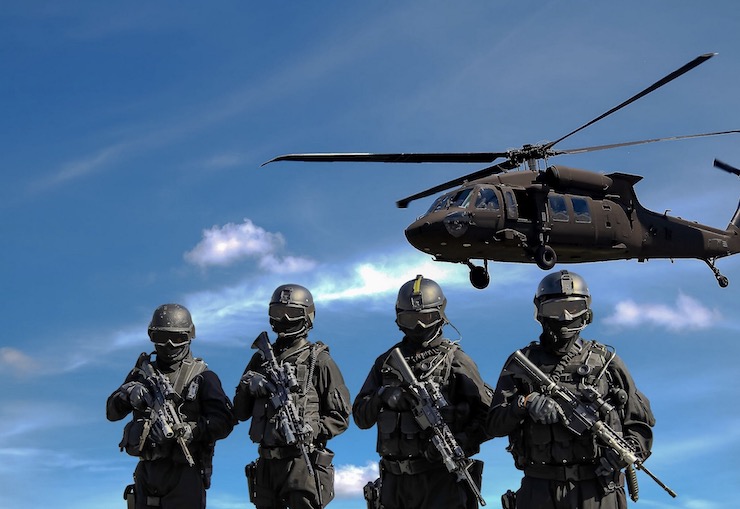
Drones have many uses in law enforcement settings, including search and rescue, criminal pursuit and crime scene analysis. But one lesser-known highly specialized niche is the use of drones to support SWAT operations. Drones can enter a building or room ahead of a SWAT team to gain situational awareness; they can also be equipped to break a glass window to facilitate police entry, if needed. Some drones can be fitted with microphones and loudspeakers to issue a warning or to engage a holed-up suspect in conversation; this can defuse tensions and make a “breach” operation unnecessary.
Drones can also assist SWAT teams in a number of more subtle ways. Mark Lang, an experienced SWAT operator, says the entry of a drone tends to distract and confuse and even intimidate a criminal suspect. The drone is noisy and can serve as a cover for other tactical police operations that might otherwise be detected, he argues. In a number of SWAT incident settings, the sheer presence of a police drone has proven to be a game-changer, leading a criminal suspect to surrender within minutes.
There are also some potential limitations to using drones in SWAT settings, Lang notes. One is signal integrity. Depending on the strength of the GPS or Wi-Fi signal, a drone deep inside a building can lose its connection to a remote pilot rendering it completely ineffective. Another problem is battery power. Most SWAT operations last more than 30 minutes, exceeding the life of a standard drone battery. If the drone is conducting surveillance outside the building it can be recharged, but probing deep inside the building, and unable to return, it might simply lose power and crash.
It’s essential that SWAT teams purchase and deploy the right kind of drones in the right kind of incident settings, Lang notes. Some drone models, including the US-1, are equipped with frontloaded batteries that last up to 70 minutes. Another drone, the SkyHook Loki Mk2, has propeller guards that allow the drone to bounce off of walls and lighting, and even to survive a 40-foot crash.
Lang suggests that all teams purchase several drones on the principle that “two is one, and one is none.” He also notes that terrestrial drones – or police robots – might be deployed in tandem with aerial drones. A robot might breach a door, in place of the SWAT team, and facilitate the aerial drone’s entry. If negotiations via aerial drone break down, the terrestrial drone can also deliver explosive or incendiary devices as needed.
Of the 1,300 or so law enforcement agencies nationwide that deploy drones – about 8% of the total – it is not known how many also use their drones to assist SWAT teams. Last year, in Madison, WI, a SWAT team sent a drone into a crowded theater to try to find six teenagers fleeing arrest for a burglary. When the theater emptied out, the drone, assisted by cameras with infrared technology, identified the teenagers and persuaded them to surrender. In another incident, a suspect barricaded inside a building responded to a drone by firing his weapon at the aircraft but was sufficiently rattled by the encounter that he also decided to surrender.
Experts say the growing number of active shooter incidents is spurring more police departments to consider purchasing drones for their SWAT operations. The Tuscaloosa Alabama police department recently began drone training sessions for its SWAT team. Lang has begun touring the country and offering workshops on “how to maximize the capabilities of SWAT drones.” His presentation on this topic at the annual National Tactical Officers Associations (NTOA) event in Milwaukee, Wisconsin last September packed the conference room.
There’s little doubt that drones have an important role to play in a host of SWAT scenarios. These include hostage situations, terrorist attacks and even routine search warrant operations that too often go awry, requiring a SWAT intervention. The available evidence suggests that the presence of drones can deter SWAT incidents and also limit their duration, reducing police and civilian fatalities. In the end, drones can lower human and operational costs, more than justifying the original outlays to acquire them.



